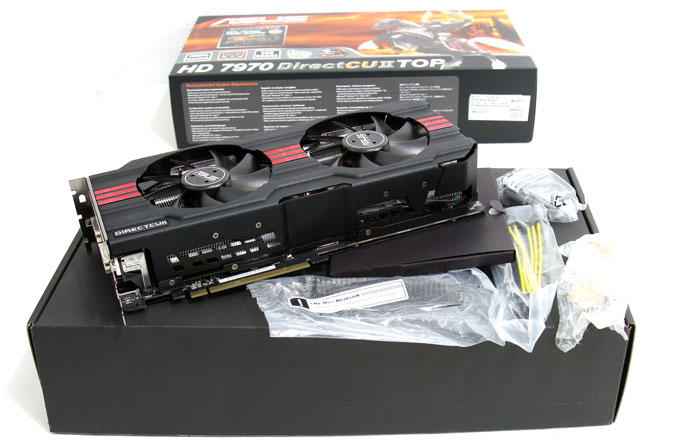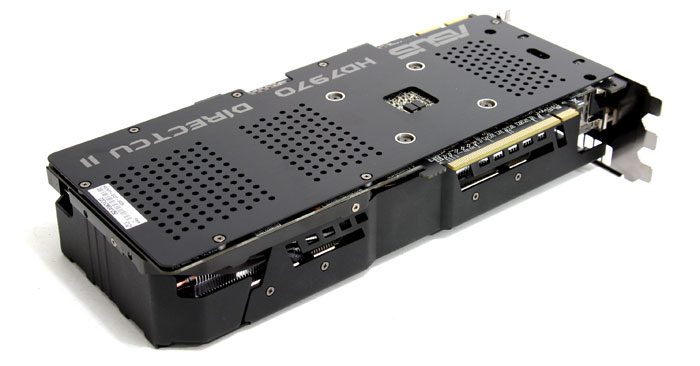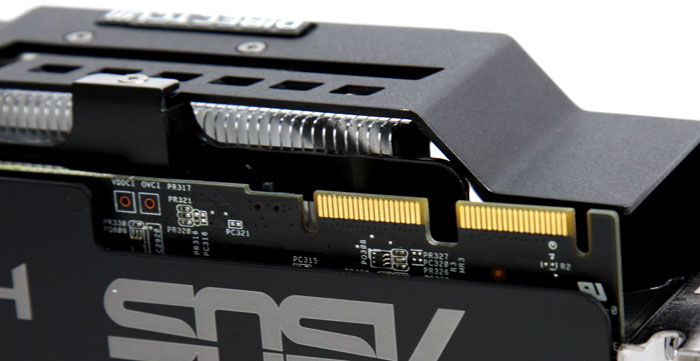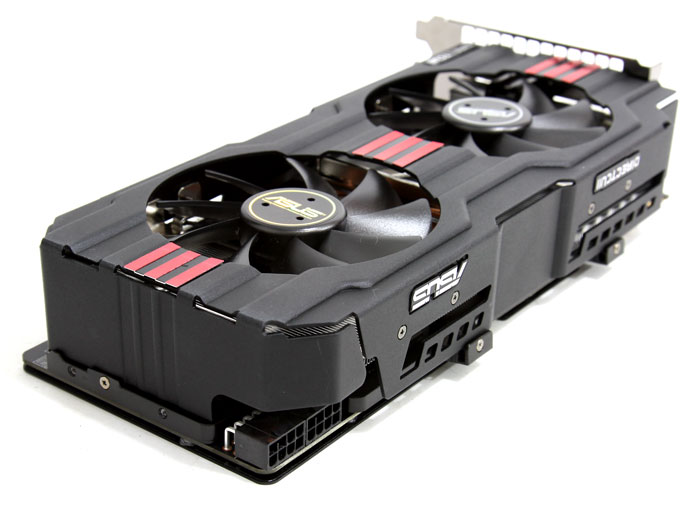Product Showcase
Product Showcase
So, pictures then, below you can see the ASUS Radeon HD 7970 DirectCU II, this is a 3GB model graphics card. We expect the product to retail for roughly 450-500 EUR in the launch phase, we hope price will level in a few weeks but that will depend on availability versus demand.

Included with all cards will be a manual and a demo/driver CD, power converters and monitor connector converters to get your Eyefinity freak on. Also a crossfire bridge is included, obviously. You'll also receive a small VRM heatsink, you can use that should you need to remove the cooler for LN2 cooling.

As you can see ASUS customized the card alright, it's big and heavy at roughly one KG. A recognizable dark/red looking card is what you may expect from them. The 4.3 Billion transistor encounting 28nm Tahiti based GPU core is tied to a whopping 3GB memory.
Now the reference cards are clocked at a 925 MHz core frequency but this model is factory clocked at 1000 MHz for you. The GDDR5 memory runs at a default 5.6 Gbps (that's 1400 MHz effective data rate as GDDR5 has a quad data-rate, so effectively that quadruples that number). The memory is running on a 384-bit bus.

Here we can see the backside, the card will fit pretty much any chassis as its 27cm in length. A nice backplate is applied. The card screams sturdiness from A to Z.

AMD allows you to opt for the multi-GPU road with Crossfire(X) as an option. You can pair two, three or (if you are loaded) even four cards in one PC and have them do a decent workout (albeit a bit difficult with 3-slot graphics cards :).

The R7970 has a maximum power consumption of roughly 210 Watts, our measurements actually show numbers slightly above that value as we measured 222 Watt under peak gaming load. The board's overall power consumption from idle to load is excellent really, roughly 10 Watt in idle and when the monitor goes into sleep mode just 3 Watt. You will need to hook the card up to your power supply with two 8-pin PCIe PEG connectors. We recommend a 550W power supply to start with, with one card of course.
